
Election Overhaul: One Nation One Election's Impact on Indian Politics

Numerous elections that take place at different levels, from local panchayats to state assemblies and the main stage of national politics, are woven into the vivid tapestry of India's democracy. It's a difficult and frequently daunting procedure that has always been vital to the country's democratic identity. A innovative notion, however, has gained traction in recent years in an effort to both simplify this complex network of elections and fundamentally alter India's political system.
Today's topic is "One Nation One Election," a radical idea that calls for a synchronized electoral system for the entire country. This idea has provoked heated conversations, arguments, and hopes. Supporters say it may improve governance and efficiency, while detractors question its viability and its effects on the democratic spirit.
In this blog post, we'll set off on an analytical trip into the core of this revolutionary idea, looking at its historical context, the arguments in favor of and against it, and—most importantly—possible ramifications for the largest democracy in the world.
We investigate the intriguing and divisive topic of "Election Overhaul: One Nation One Election's Impact on Indian Politics."
Brief Overview of India's Complex Electoral System
India, frequently described as the largest democracy in the world, has a complex and impressive voting system. Election administration in India is no easy task given its population of over a billion and the country's diverse cultural, linguistic, and geographical setting. Here, we provide you a quick overview of the intricate details that make up the Indian election system.
Despite its size and variety, India's voting system is proof of its dedication to democracy. When debating ideas like "One Nation One Election," it is essential to understand the complexities of this system since it necessitates a comprehensive assessment of how such changes may affect this intricate yet reliable democratic machinery.
Introduction to the Concept of "One Nation One Election"
Change is a constant in Indian politics, and ideas about changing the voting system are no exception. The idea of "One Nation One Election" (ONOE) is one such proposal that has received a lot of attention recently. A dramatic change in how India conducts elections is envisioned under this theory, sometimes known as simultaneous elections.
At its core, ONOE is a plan for coordinating different elections held throughout the nation. India now has an ongoing election cycle where several union territories, states, and the national government have elections at various intervals. Elections take place at various periods throughout the year, resulting in an almost constant succession of polls.
Ongoing election cycles, according to ONOE proponents, can strain resources, impede governance, and keep people in campaign mode all the time. They claim that by holding all elections concurrently, including those for the Lok Sabha and local panchayats, the country would gain a number of advantages, including better governance, financial savings, and lessened political division.
This concept, however, is not without its detractors and difficulties. The practicality of such a comprehensive makeover, the possibility of weakening regional participation, and the danger it poses to the federal structure of Indian democracy are all legitimate concerns raised by critics.
ONOE is the subject of a lively public debate. It has far-reaching effects on the largest democracy in the world and could influence Indian politics in the future. So let's start this journey to explore the complexities, opportunities, and debates around the idea of "One Nation One Election" and its potential to alter India's election system.
Purpose of the Blog Post: To Explore the Impact of this Proposal on Indian Politics
This blog post's goal is to take readers on an enlightening trip into the core of the "One Nation One Election" (ONOE) idea and explore the plan's potential effects on the complex political landscape of India. It aims to give readers a thorough understanding of this revolutionary notion, enabling them to understand both its benefits and drawbacks.
Politics in India is always changing, thus initiatives like ONOE should not be taken lightly. They have the ability to alter how the country conducts elections, governs its citizens, and upholds democratic norms. As a result, it is critical to study this suggestion from a variety of perspectives, analyze the reasons for and against it, and carefully consider its possible effects.
We won't limit our investigation to only theoretical debates. We'll try to base our critique on the actual workings of Indian democracy instead. We will take into account how the ONOE may impact political parties, the electoral process, campaign tactics, and, most significantly, the lives of the folks who take part in this exciting democratic exercise.
Readers should have a sophisticated grasp of the ONOE plan, its possible effects on national governance, and the arguments around it by the end of this blog post. Recognizing that decisions made in the field of Indian politics have a significant impact on the lives of more than a billion people, our goal is to promote informed conversations and critical thinking on this subject.
We ask our readers to have an open mind, assess the information provided, and participate in the ongoing discussion concerning the future of India's voting system as we travel this journey. We will examine "One Nation One Election" together as a lens through which to examine the potential transformation of Indian politics.
Understanding "One Nation One Election"
Explanation of the Concept
"One Nation One Election" (ONOE), at its heart, is a radical plan that aims to coordinate multiple elections held throughout India into a single, unified electoral cycle. In plainer terms, it envisions the nation voting simultaneously for all levels of government, from local panchayats to the national parliament.
A number of perceived problems with the existing electoral system are addressed by this idea. The possibility for cost savings is one of the main arguments in favor of ONOE. Numerous elections occur throughout the year, therefore a significant amount of resources are devoted to running and managing the voting process, which includes everything from printing ballots to assigning security personnel. Supporters claim that by holding all elections simultaneously, these expenses would be greatly decreased.
The potential for better governance is another significant advantage that is frequently mentioned. Political parties and their leaders may constantly be in campaign mode under the current system, concentrating on electoral tactics rather than governing. ONOE supporters think that by giving elected officials longer, uninterrupted terms to carry out their duties, synchronized elections could result in more stable government.
Historical Context and Its Origins
The ONOE concept has historical origins in Indian politics and is not wholly new. The Law Commission of India first put up the idea in 1999's 170th report. But when India's Prime Minister Narendra Modi backed the idea in 2016, it attracted a lot of attention. It has continued to be a hotly debated subject ever since.
The necessity for electoral reform and efficiency in the Indian political system can be linked to the historical backdrop of ONOE. It has long been noted that India's multi-tiered elections, in which different levels of government hold their own electoral cycles, lead to administrative hiccups and cost constraints. This historical background lays the groundwork for comprehending why ONOE became a suggested remedy.
Key Proponents and Opponents of the Idea
Within India's political system, ONOE has gained both fervent advocates and outspoken detractors.
Political figures, scholars, and politicians who support ONOE see it as a way to improve governance, cut costs, and expedite the electoral process. They contend that synchronized elections would free up governments from having to continually be in election mode and allow them to concentrate on development and policy implementation.
On the other hand, ONOE's opponents have voiced reservations about its viability and potential effects. They contend that it might compromise India's democracy's federal structure, weaken regional participation, and result in an excessive concentration of power. Additionally, many doubt the viability of holding such a sizable electoral process in a varied and complicated nation like India.
The Arguments For One Nation One Election
Enhanced Governance and Policy Stability
The prospect for improved governance and greater policy stability is one of the main arguments in favor of "One Nation One Election" (ONOE). Elections at different levels of government can frequently result in political leaders staying in a constant state of campaign mode under the current system. Their attention may be drawn away from successful governance by their ongoing emphasis on election plans.
By synchronizing elections, ONOE proponents assert, elected officials would serve uninterruptedly for a longer period of time. As a result, they might have more time to put policies into practice, concentrate on development projects, and promote the welfare of the constituents they represent. Leaders may put more emphasis on their responsibilities as policymakers and administrators rather than worrying about the next election.
Reduction in Election-Related Expenses
The expense of holding numerous elections at various levels of government throughout the year is a major worry. Costs associated with printing ballots, setting up polling places, employing security guards, and upkeep of election equipment are high. Elections being combined into a single cycle, according to supporters of the ONOE, would save a significant amount of money.
All elections would be held concurrently, reducing the frequency of resource and financial mobilization. This could free up financial resources that could be used to fund more urgent national objectives like infrastructure building, healthcare, and education. Political parties, particularly smaller ones that frequently struggle to finance several election campaigns, may feel less financial pressure as a result of these cost reductions.
Streamlining of Election Logistics
Elections in a nation the size and diversity of India present enormous logistical difficulties. It takes careful organization and execution to coordinate election schedules, deploy security personnel, and guarantee the availability of polling places and electoral equipment. Election commissions and governing bodies are continually working on election-related tasks because they take place at various periods throughout the year.
ONOE supporters contend that these logistical difficulties would be simplified by coordinated elections. The coordination efforts would be made simpler and the demand on resources would be lessened with a single electoral cycle. Elections might become more effective and well-organized as a result, with fewer chances of delays or logistical hiccups.
Potential to Focus on Development over Campaigning
The ability of elected officials and governments to concentrate more on development and governance than campaigning is perhaps one of the most important advantages cited by ONOE advocates. Politicians frequently devote a significant amount of time and money to election-related activities in the existing system, such as rallies, commercials, and outreach.
Elections that are timed together would allow elected officials to focus less on electoral politics and more on the urgent issues that affect their constituents and the country as a whole. This might result in a more stable and effective administration that can focus its efforts on social programs, infrastructure improvement, policymaking, and other initiatives that directly benefit the people.
It's crucial to take into account these justifications for improved governance, decreased costs, and streamlined processes as we continue to examine the idea of ONOE.
The Arguments Against One Nation One Election
Constitutional and Logistical Challenges
Even while "One Nation One Election" (ONOE) has promise, it's important to recognize the serious legal and practical difficulties it poses. The Constitution of India gives states and union territories the freedom to hold their elections on their own. Election synchronization would necessitate constitutional modifications as well as significant administrative and legal adjustments.
Concerns have also been raised about the viability of holding such a sizable election concurrently across the nation. The sheer size and population of India make election coordination a challenging task. It would be an unparalleled logistical task to provide sufficient security, logistical support, and election infrastructure for all constituencies.
Potential Impact on Regional Diversity and Representation
Critics claim that ONOE can potentially weaken the regional representation and variety that define Indian democracy. There is a chance that by having all elections at once, major political parties and national concerns may take precedence over local and regional ones. This might homogenize political discourse and push out smaller parties that support local interests.
Additionally, India's diversity goes beyond mere regionalism. It also includes linguistic, cultural, and racial diversity. Election synchronization might not accurately reflect these distinctive identities and might damage India's political landscape's intricate tapestry.
Concerns About Undermining the Democratic Process
Opponents of ONOE have expressed serious concerns about how it can damage democracy as a whole. Elections act as a crucial accountability tool by enabling individuals to periodically evaluate the effectiveness of their elected officials. Election synchronization is opposed because it is thought to interfere with the normal cycle of accountability.
The ongoing involvement in politics and election campaigns also acts as a check on the authority of elected authorities. Politicians' responsiveness to the interests and concerns of their constituents may decline if they serve longer, unbroken terms.
Arguments Against Concentration of Power
The concentration of power is a significant additional worry. Critics are concerned that ONOE would result in a concentration of power at the federal level. The current approach strikes a balance between regional and national interests by allowing states and regions to speak up at different times. Election synchronization might upset this equilibrium, consolidate power in the hands of the federal government, and reduce state autonomy.
This concentration of power may have far-reaching effects on how decisions are made, how resources are allocated, and how well governments are able to meet their particular demands and challenges.
We must keep in mind five crucial issues as we learn more about the ONOE concept: constitutional and practical issues, regional diversity and representation, the integrity of the democratic process.
Case Studies and International Comparisons
Examining Countries with Synchronized Elections
It is beneficial to look at nations that have adopted synchronized elections in order to obtain understanding of the idea of "One Nation One Election" (ONOE). Even if each country's circumstances are particular, learning from their experiences can help us foresee potential problems in India.
At various levels of government, several nations hold synchronized elections, including the United States and South Africa. Federal elections for the President, Congress, and Senate are held concurrently every four years in the United States, for instance. South Africa also combines its national and provincial elections.
These nations serve as illustrations of how synchronized elections can make the electoral process simpler. Since voters are more likely to participate when they just need to go to the polls once for numerous elections, this frequently results in higher voter turnout. This can increase democratic participation and lower election expenses all around.
Lessons Learned and Challenges Faced in Other Nations
It's important to understand, nevertheless, that synchronized elections do not come without their difficulties. We may prepare for probable obstacles in India's context by using lessons acquired from these nations.
The significance of precise planning and infrastructure is one important lesson. Election commissions, security forces, and municipal authorities must effectively coordinate with one another in order to conduct synchronized elections. Coordinating these efforts can prevent logistical bottlenecks and voter disenfranchisement.
Synchronized elections can have a tense planning process. Election congestion and confusion may result when national elections take place at the same time as state and municipal ones in nations like the United States. Timing must be carefully balanced in order to achieve smooth and transparent elections.
Additionally, India faces particular difficulties due to its complexity and diversity. The unmatched cultural, linguistic, and regional diversity of India must be carefully taken into account in any effort to hold synchronized elections. The interests and representation of many states and areas must be delicately balanced, which calls for careful planning and thought.
Examining the experiences of nations having synchronized elections can provide insightful information on the advantages and drawbacks of ONOE. While there are unquestionable benefits in terms of streamlining the electoral process and raising voter turnout, we must also be aware of potential logistical and administrative difficulties. If India chooses to follow the "One Nation One Election" approach, learning from these lessons and prudently putting them into practice will be essential.
The Indian Context
Current State of India's Electoral System
It's important to comprehend how India's electoral system currently functions as we consider the prospective changes outlined by "One Nation One Election" (ONOE). India's democracy is distinguished by its decentralized, multi-tiered organization. It includes a variety of elections, including those for the national parliament, state assemblies, and local panchayats.
There is currently a constant cycle of elections because they are held at various intervals and at various levels. This intricacy results from the fact that India's democracy is federal in form and that states and union territories have a great deal of discretion over how to conduct their elections. While State Election Commissions are in charge of managing state and local elections, the Election Commission of India (ECI) is in charge of managing parliamentary elections.
Recent Discussions and Proposals Related to One Nation One Election
The concept of ONOE has gained popularity recently, igniting discussions and debates among political stakeholders and at various levels of government. Prime Minister Narendra Modi's endorsement of the idea in 2016 rekindled interest in the idea's viability and consequences.
In order to start a formal conversation about the ONOE idea, the Election Commission of India (ECI) invited political parties to a debate on the topic in 2017. In enabling these dialogues and gathering feedback from diverse stakeholders, the ECI has been crucial.
A legislative standing committee was then established to investigate the viability and effects of ONOE. The group sought opinions from professionals, political parties, and the general public to determine if synchronized elections would be feasible and desirable.
Despite the fact that ONOE is still a hotly debated issue, it is important to understand that no actual legislative changes have resulted from the conversations. The road to ONOE has been difficult because to practical difficulties, constitutional complications, and the requirement for political party consensus.
It's important to take into account the current design of India's electoral system as well as the most recent debates and ideas surrounding this game-changing idea as we continue to examine the potential of ONOE in this blog article. These elements influence the context in which the concept is being thought about and offer crucial insights into the opportunities and problems it poses for Indian democracy.
Potential Implications and Scenarios
Scenario Analysis: What Could India Look Like with Synchronized Elections?
Consider a situation in which India implements "One Nation One Election" (ONOE) and conducts all elections—from the regional panchayats to the national parliament—at once. What may the country's repercussions of such a revolutionary upheaval be?
A more efficient and affordable electoral process is one potential outcome. Election synchronization could result in significant financial savings by reducing the number of elections and the accompanying costs. Governments might then be able to distribute money for urgent infrastructural, public welfare, and development projects.
The effects of ONOE, however, go beyond money-related issues. As elected officials would have longer periods to put policies into effect and concentrate on their administrative responsibilities, it might also result in more consistent governance. This stability may result in more accountable and effective governance, allaying the worries of ONOE proponents.
Impact on Political Parties, Campaigns, and Strategies
Under ONOE, the political landscape and electoral processes may significantly change. Political parties would have to adjust to a new environment where they would have to plan for a solitary, simultaneous election rather than several staggered ones.
Political parties may decide to focus their resources and energy on just one electoral cycle, resulting in fewer frequent but more concentrated campaigns. This can result in a change in campaign tactics and a more effective use of campaign resources. Parties may place a higher priority on long-term development plans and policy ideas than on populist quick fixes.
There are worries that ONOE might exacerbate the already competitive nature of Indian politics, though. The political climate could grow more tense and politicized as all parties compete for attention and votes at the same time. It may become even more difficult for smaller, regional parties to compete successfully on a national level.
Public Opinion and Surveys Regarding the Proposal
Variations in public opinion on ONOE are a reflection of the wide range of viewpoints found within India's enormous population. While some individuals see it as a way to simplify government and lower election-related costs, others are worried about how it would affect regional diversity and representation.
Surveys and polls have been conducted in an effort to determine how Indian voters feel about ONOE. These polls show a conflicted picture, with some demographic groups embracing the theory while others are skeptics.
The fluidity of public opinion highlights the significance of lively debate and coalition-building in the implementation of ONOE. The future of India's electoral system will be greatly influenced by the political parties' openness to listening to the worries and aspirations of the people.
The possibilities, effects on political parties, and public perception around ONOE make it clear that this idea has the ability to significantly alter India's political landscape. To ensure a lively and representative voting system, it is crucial for Indian democracy to strike a balance between the advantages and disadvantages of this revolutionary idea as discussions and choices proceed.
Critiques and Controversies
Counterarguments to the Arguments Against One Nation One Election
While there have been legitimate objections to the implementation of "One Nation One Election" (ONOE), proponents of the idea have also presented arguments in opposition to these concerns.
Debates within the Political and Academic Communities
Within India's political and intellectual circles, the ONOE concept has prompted concerns and disputes. In-depth discussions have been held amongst academics, political analysts, and decision-makers to assess the viability and attractiveness of this revolutionary idea.
Researchers have examined the potential effects of ONOE on Indian democracy in academic settings. These studies investigate a range of topics, such as the constitutional ramifications, practical difficulties, and potential impacts on local diversity.
Political parties have adopted various positions on ONOE inside the political sphere, furthering the discussion. While some parties are in favor of the proposal as a way to simplify elections and government, others are concerned about possible negative effects including the concentration of power.
The discussions taking place in these communities serve as a reminder of how complicated the ONOE concept is and how important it is to have an informed conversation. Such discussions allow for the critical examination of ONOE's advantages and disadvantages, ultimately influencing the direction of India's electoral system.
The Way Forward
Possible Steps to Implement One Nation One Election
In a multicultural and democratic nation like India, implementing "One Nation One Election" (ONOE) calls for a methodical, staged approach. The concept is sound, but because of the complexity, a strategy must be carefully considered.
To help with the implementation process, consider the following possible steps:
The Role of Public Discourse and Political Will
The technical components of ONOE's execution are important, but so is the broader context of public discourse and political will.
These elements are essential in the following ways:
Conclusion
We've explored the idea of "One Nation One Election" (ONOE) in great detail throughout this blog article. We have examined the background, the pro and con arguments, the potential consequences for Indian politics, and the difficulties it presents. We have also looked at arguments within the academic and political sectors, learning from nations having synchronized elections, and potential implementation measures.
Personal Reflection
As we wrap up, it's critical to recognize that ONOE is a term that divides people's views and causes heated arguments. Enhanced governance, cost savings, and simpler logistics all have significant potential advantages. The issues surrounding regional diversity, democracy, and power concentration are equally important, though.
Despite not taking a firm position on the concept, the author thinks ONOE deserves thorough examination. It has the potential to improve governance, simplify India's voting system, and lessen the financial burden of country's frequent elections. The author is aware of the significance of addressing the legal and practical issues while preserving regional representation and diversity.
Encouragement for Readers to Engage in the Ongoing Conversation
The idea of ONOE is not merely a subject for scholarly debate; it is a suggestion that could alter the course of Indian democracy. It entails an intricate interaction of political, logistical, and constitutional factors, as we've seen. It is crucial that readers participate in the ongoing discussion and keep up with advances in this field.
Your opinion counts in determining the direction of Indian politics. Whether you are in favor of or against ONOE, your viewpoint enriches the conversation. Engage in public dialogue, offer your opinions, and promote candid and fruitful debates among peers, decision-makers, and specialists.
The ONOE argument is far from settled and will develop more as India's political climate evolves. Your active participation in this discussion assures that many viewpoints and well-informed discussions will shape the development of Indian democracy. We appreciate you joining us on this research and reflection trip.
Links to Relevant Reports, Articles, and Academic Papers
There are a ton of reports, articles, and academic papers available for those who want to learn more about "One Nation One Election" (ONOE). These resources provide insightful information and analysis. Here are some sources we advise using:
Recommended Books or Documentaries for Detailed Examination
Here are some recommended publications and documentaries for individuals who want to learn more about the ONOE idea and its effects:
These resources provide in-depth research and a variety of viewpoints on the ONOE plan. These suggestions might direct your discovery of this crucial facet of Indian democracy, whether you are looking for academic papers for thorough research or documentaries for a more approachable exploration.
Invitation for Reader Comments and Feedback
This blog post invites conversation rather than serving as a one-sided monologue. Your ideas, judgments, and perceptions are greatly appreciated. I invite you to express your thoughts and views in the section below, whether you concur, disagree, or have other points of view to present.
Have synchronized elections presented any difficulties or advantages in your area or nation? What worries or hopes do you have about India's "One Nation, One Election" proposal? Your contribution contributes to a deeper comprehension of this complicated problem and enriches the ongoing discussion.
I appreciate you reading this blog post, and I look forward to hearing from you and carrying on the conversation on the future of Indian democracy.
YOU MAY ALSO LIKE TO READ: -
How G20 Nations are Revolutionizing Sustainability
What does Uniform Civil Code mean?
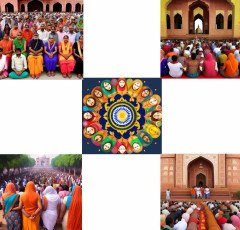
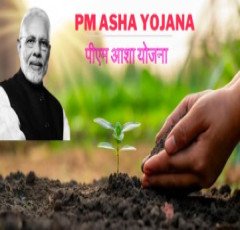

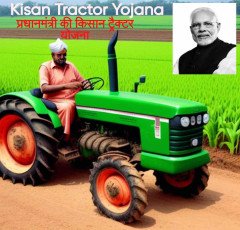

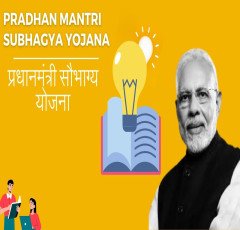
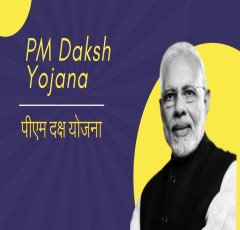
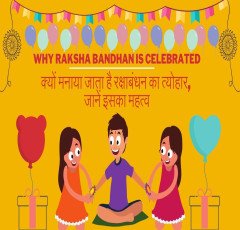
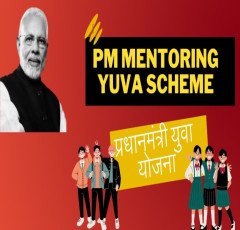


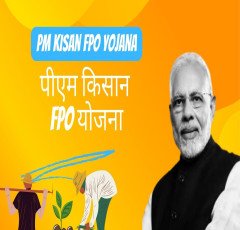
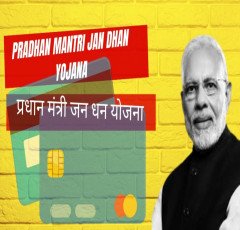


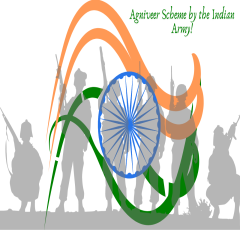






 Online Technology Classes
Online Technology Classes  1150+Trendy kids coloring pages Bundle
1150+Trendy kids coloring pages Bundle  Stylish Sneakers by Red Tape
Stylish Sneakers by Red Tape  NordPass
NordPass  Hanging Lights For Living Room
Hanging Lights For Living Room  The Secret Email System
The Secret Email System  Kitchen Tap
Kitchen Tap  TitTok Revolution
TitTok Revolution  ASPINAL LONDON
ASPINAL LONDON  RPM 3.0
RPM 3.0  HP Laptop
HP Laptop  Top Rated From Amazon
Top Rated From Amazon  Best Phone
Best Phone  ASUS Laptop
ASUS Laptop  Echo Dot - Smart speaker with Alexa
Echo Dot - Smart speaker with Alexa  Unreal Engine 5 For Beginners Learn The Basics Of Virtual Production
Unreal Engine 5 For Beginners Learn The Basics Of Virtual Production  Wall Lamp
Wall Lamp  BEST SELLER TOP10
BEST SELLER TOP10  Unlimited access to classes on illustration, photography, design, film, music
Unlimited access to classes on illustration, photography, design, film, music  The Click Engine
The Click Engine  iPhone cable
iPhone cable  Dell Laptop
Dell Laptop  Amazon Best Selling Products
Amazon Best Selling Products  Bathroom Mirrors
Bathroom Mirrors  Digital Voice Recorder
Digital Voice Recorder  Wireless Bluetooth Earphones
Wireless Bluetooth Earphones  Kitchen Daily Use
Kitchen Daily Use  Healthy Ingredients
Healthy Ingredients  Apple iPhone
Apple iPhone  Favorite Company (Cuelinks)
Favorite Company (Cuelinks)  SEO Checklist
SEO Checklist  NordVPN
NordVPN  Men Clothing
Men Clothing  Wristbands
Wristbands  Hello Theme
Hello Theme  Rakhi
Rakhi  Acer Laptop
Acer Laptop  Best Selling Books
Best Selling Books  SOFAS
SOFAS  Online Marketing
Online Marketing  Air Purifier for Home
Air Purifier for Home  Best Sellers On Amazon
Best Sellers On Amazon  Smart Doorbell
Smart Doorbell  Artificial Intelligence
Artificial Intelligence  Prime Video
Prime Video  Only For The United States
Only For The United States  Realme Smart Phone
Realme Smart Phone  LCD Writing Tablet
LCD Writing Tablet  NordLocker
NordLocker  Pet Care Products
Pet Care Products  Women Fashion
Women Fashion  Samsung Mobile
Samsung Mobile  Door Handle Collection
Door Handle Collection  All Wireless Products
All Wireless Products  Creative Brief For Video Shoot
Creative Brief For Video Shoot  Graphics & Design
Graphics & Design  Crocs
Crocs  Sennheiser
Sennheiser  Puma (Clothing & Accessories)
Puma (Clothing & Accessories)  Best Home Appliances
Best Home Appliances  Duke T Shirts
Duke T Shirts  4k Projector For Home
4k Projector For Home  ELECTRONIC ACCESSORIES
ELECTRONIC ACCESSORIES  Home Decor Items
Home Decor Items  Motion Sensor Light
Motion Sensor Light  Essentials for Gamers
Essentials for Gamers  Adidas Shoes
Adidas Shoes  Hot Bags For Pain Relief
Hot Bags For Pain Relief  Wireless Gaming Mouse
Wireless Gaming Mouse  Dual USB Car Charger
Dual USB Car Charger  One World Collection
One World Collection  Smart Watches
Smart Watches  Best Robotic Vacuum Cleaners
Best Robotic Vacuum Cleaners 


















